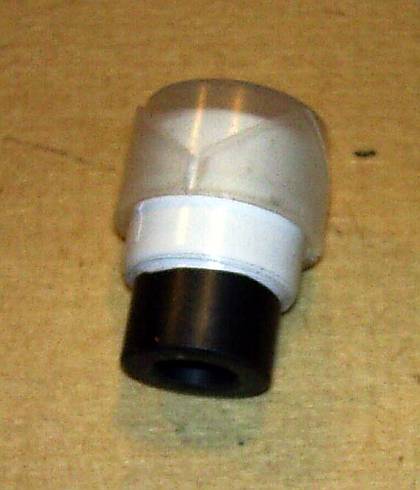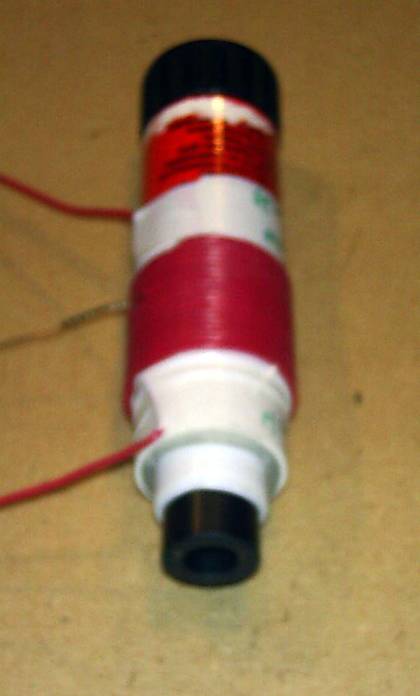Ak potrebujete variometer pre QRP zariadenie, ponúkam návod na jeho zhotovenie z veľmi ľahko dostupných súčiastok. Takýto variometer vyhovie spoľahlivo až do výkonu 30 W, možno aj viac, ale netestoval som ho väčším výkonom.
Rozpis materiálu na variometer

Čo budeme potrebovať:
- 1 prázdnu tubu od tyčinkového lepidla na papier s rozmermi vonkajší priemer cca 29 mm, dĺžka 105 mm. Rozmery nie sú príliš kritické, udávam tie ktoré som použil.
- 1 feritové jadro používané ako odrušovací člen na prívodných kábloch k monitorom s vonkajším priemerom okolo 17,5 mm, vnútorným 10 mm a dĺžkou asi 29 mm.
- vhodný vodič na navinutie cievky. Ja som použil drôt s priemerom 0,35 mm s PVC izoláciou s vonkajším priemerom 1,2 mm.
- izolačnú pásku.
Konštrukcia variometra
Konštrukcia je dobre pochopiteľná z obrázkov. Jadro do posuvnej matice slúžiacej pôvodne na posúvanie tyčinky lepidla upevníme namotaním vhodnej vrstvy izolačnej pásky. Na puzdro navinieme príslušný počet závitov cievky. Cievku vinieme k otvorenému koncu puzdra a vinutie zabezpečíme sekundovým lepidlom.
Nedoručujem vinutie výrazne dlhšie ako je dĺžka jadra. Pri navinutí 20 závitov uvedeného drôtu s odbočkou na 13 závite som získal takéto preladenie, 20 závitov = 9,5 až 19 μH, 13 závitov = 5,2 až 10 μH a 7 závitov = 2,3 až 4 μH. Jedinou nevýhodou je absencia indikácie polohy jadra, ale ak ladíme cievku na optimálne prispôsobenie podľa meracieho prístroja, tak to príliš nevadí. Na konci s minimálnou indukčnosťou nás závit zastaví a na opačnom konci je možné zablokovať závit zdeformovaním teplom alebo iným dorazom a nepretáčať ho za každú cenu. Nemal som možnosť zmerať Q ale podľa výchylky ručičky na merači indukčnosti ho odhadujem na 130 až 180. Pre pravé QRP by stačilo aj menšie puzdro s menším jadrom, ale nemal som ho k dispozícii. Na podobnom princípe chcem vyskúšať aj premenlivý kondenzátor, ale musím zohnať ďalšie puzdro. O výsledkoch Vás budem informovať.

Miro, OM3CKU
